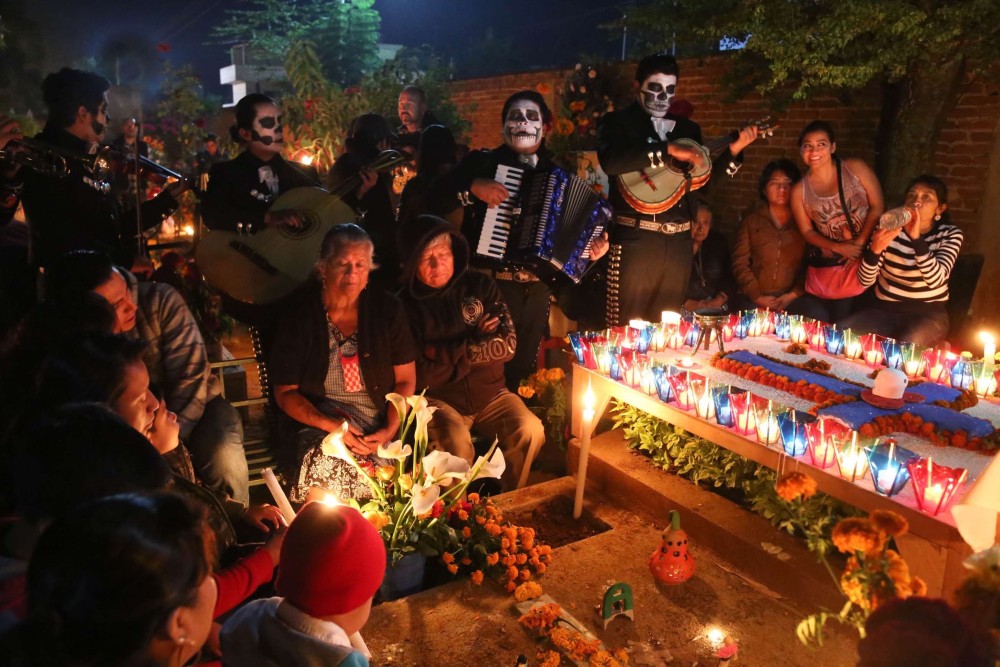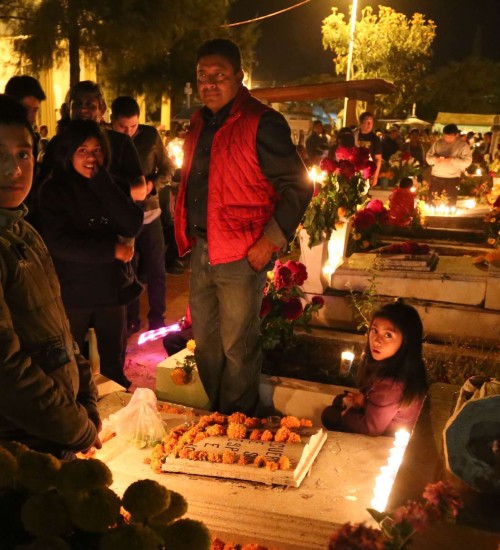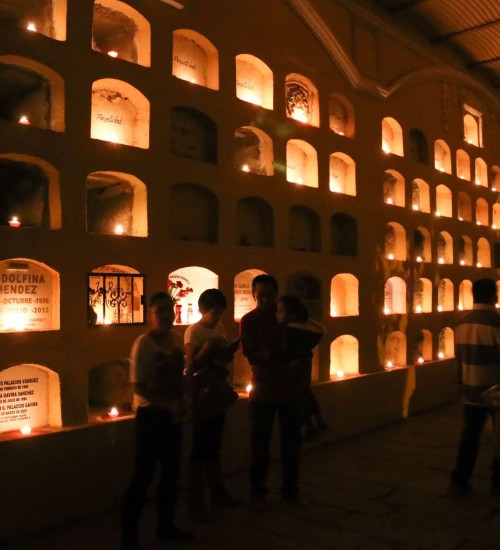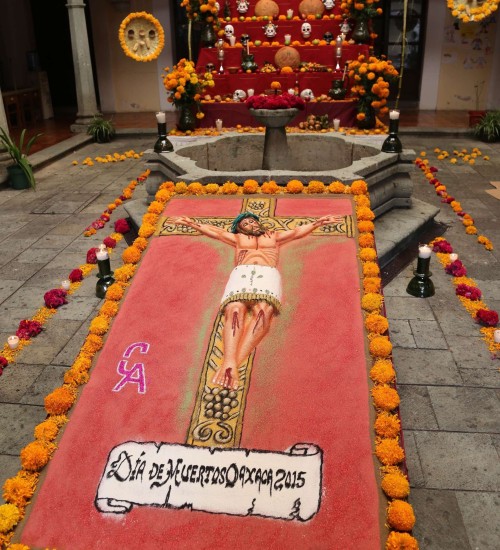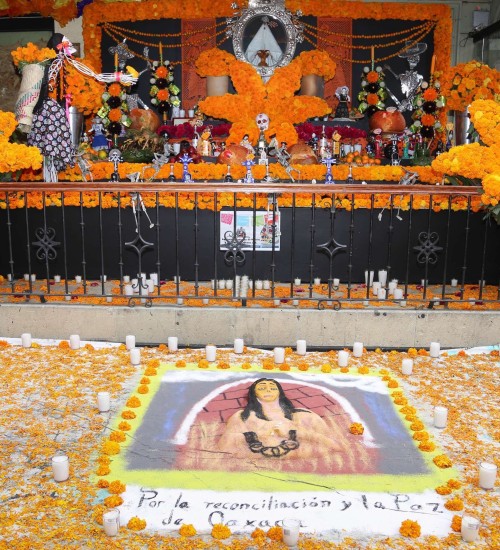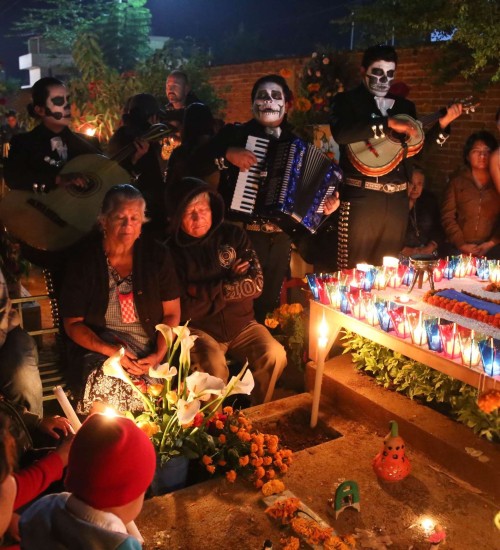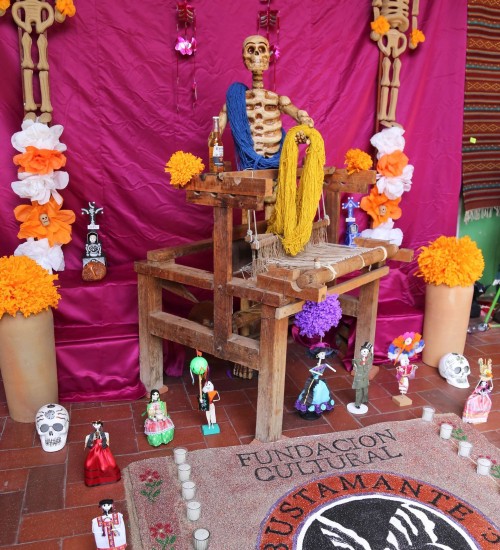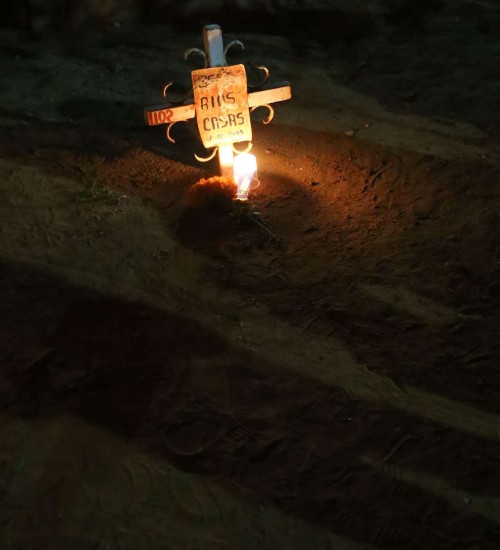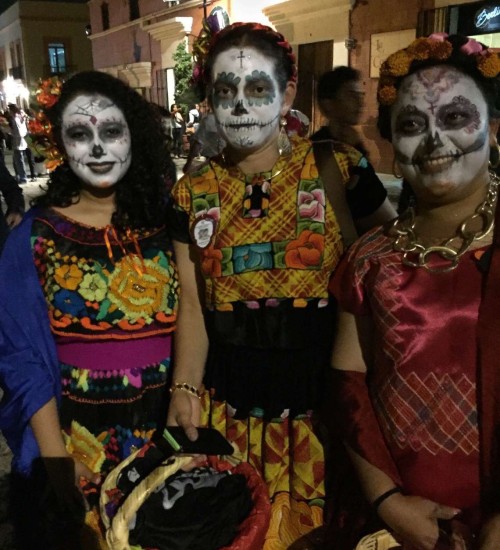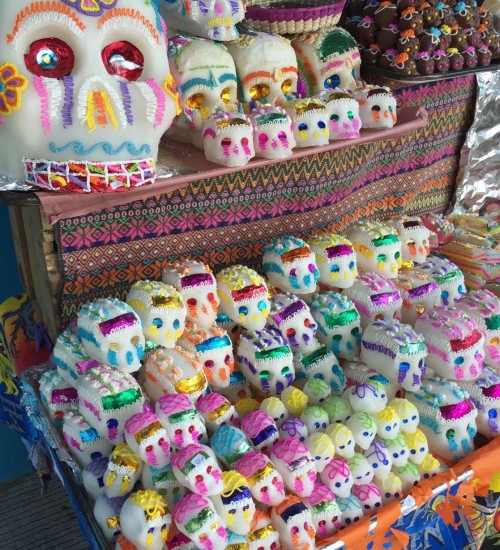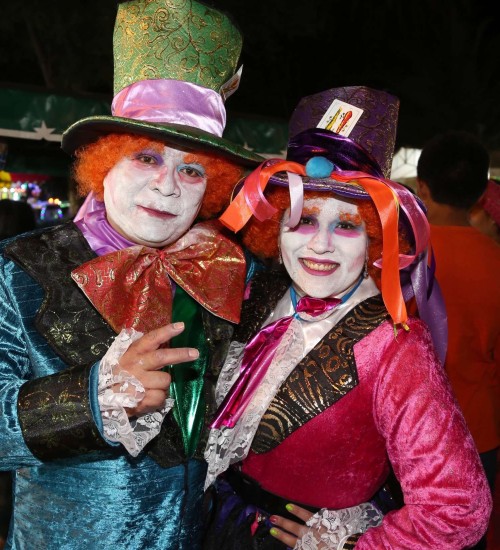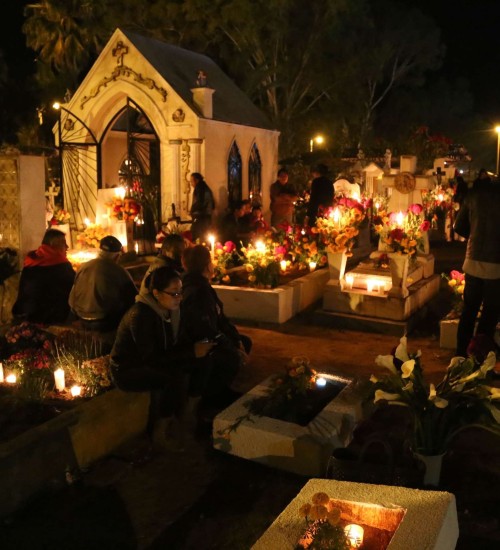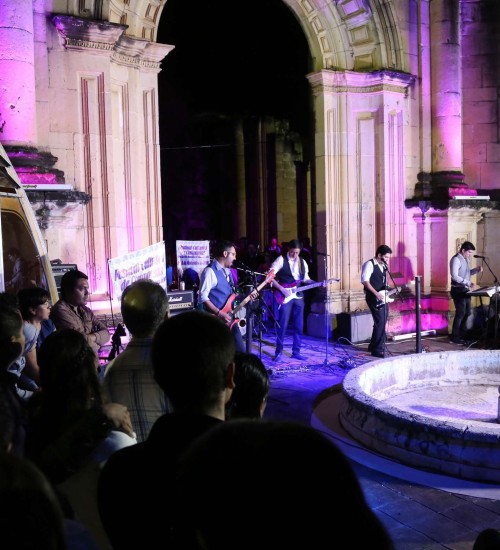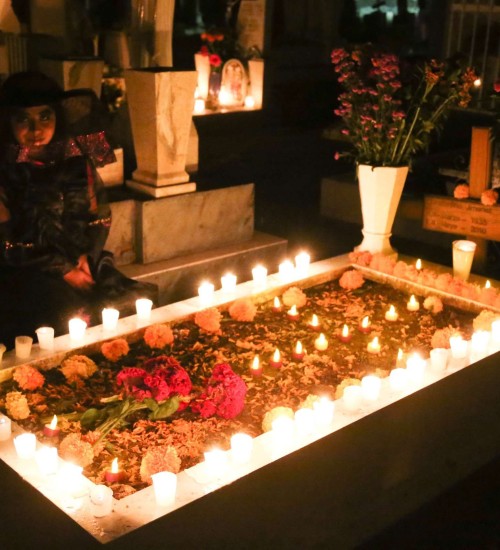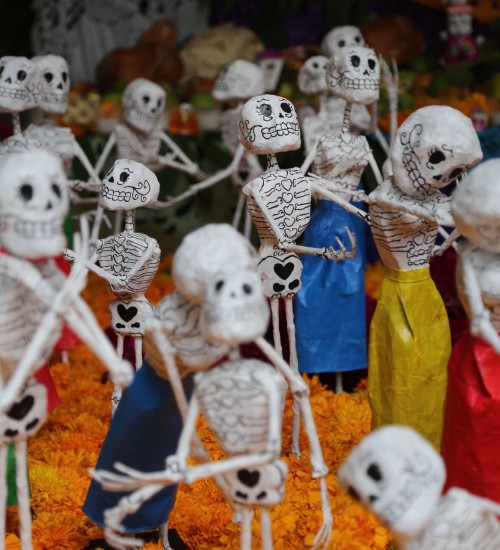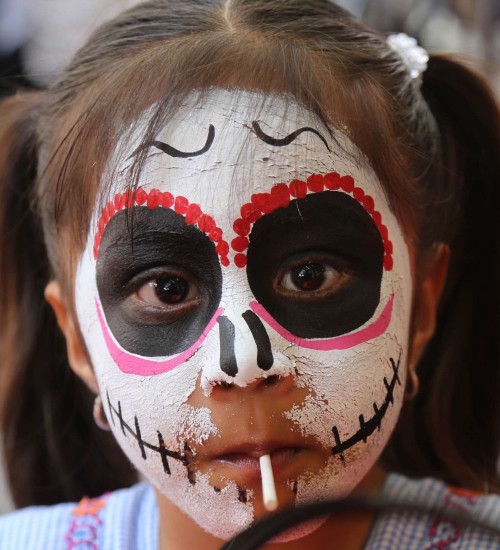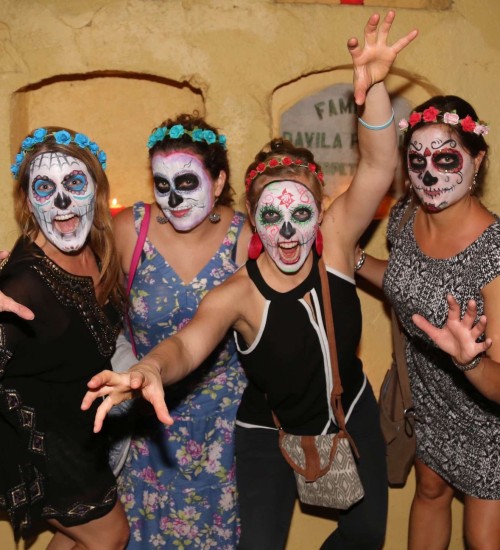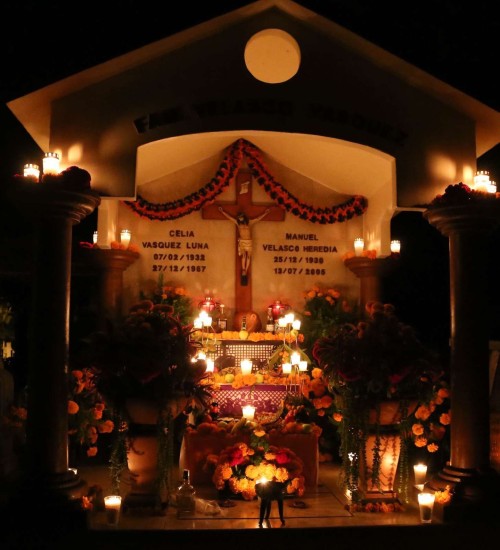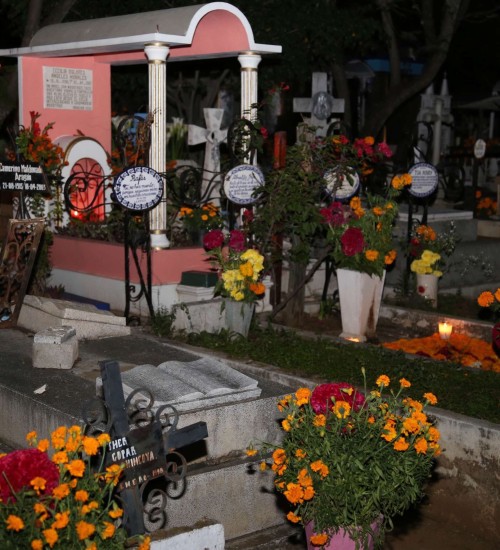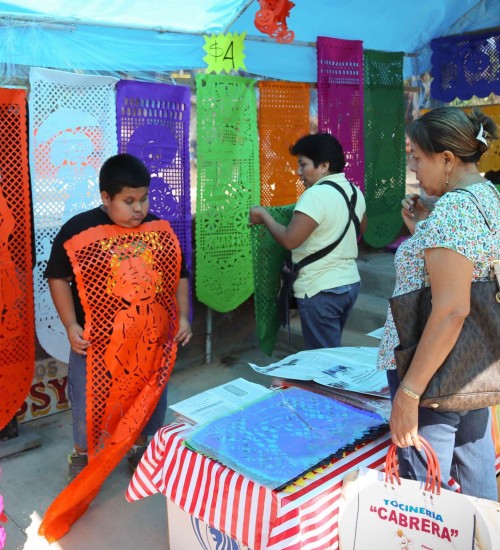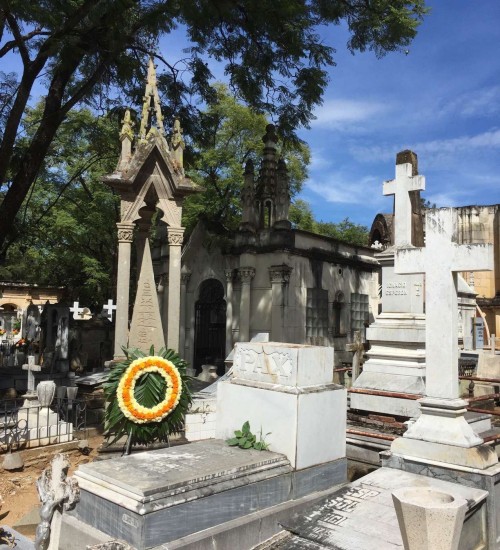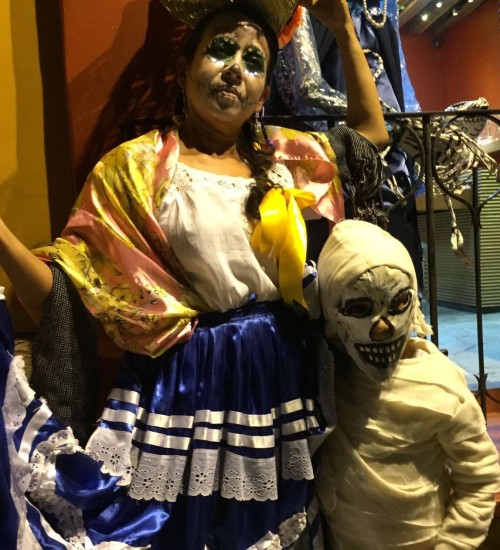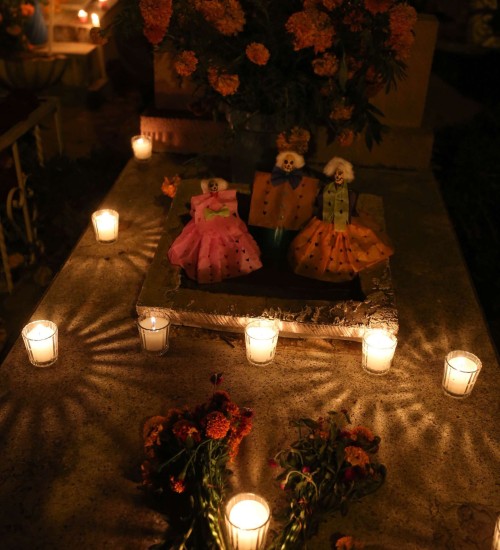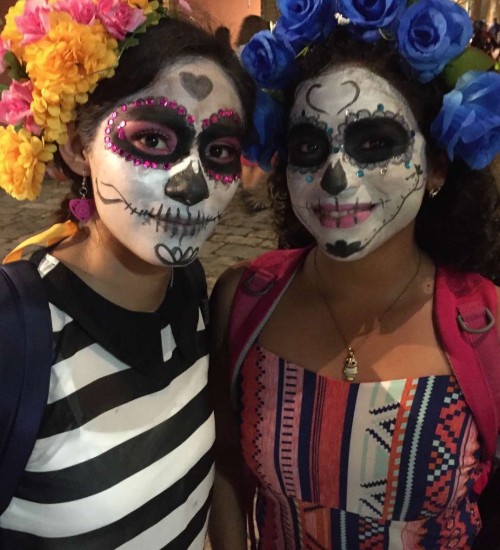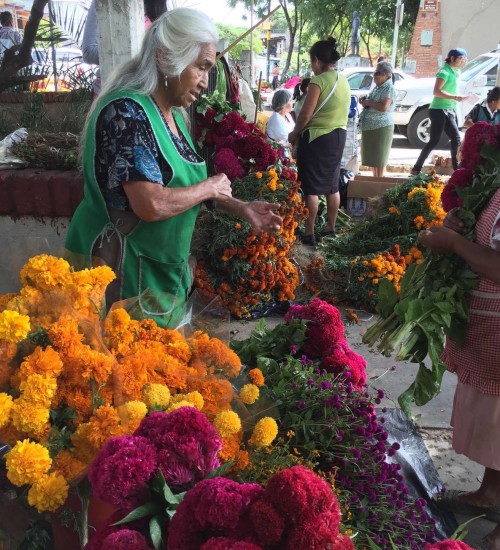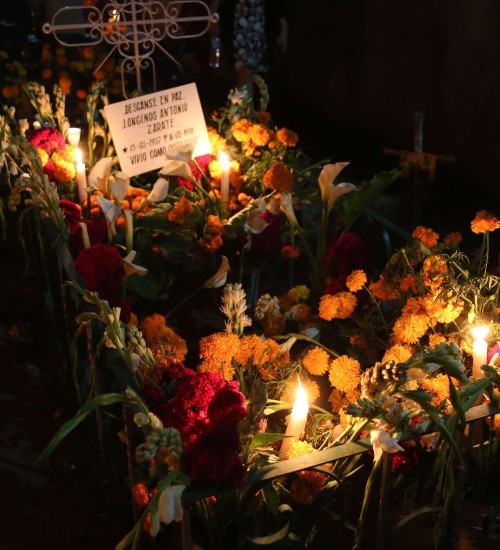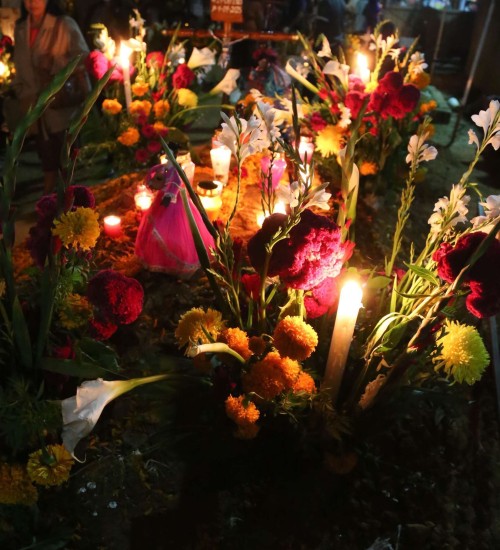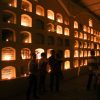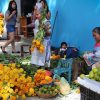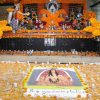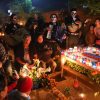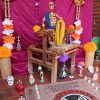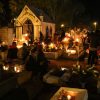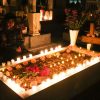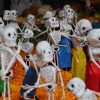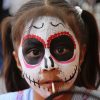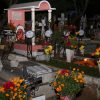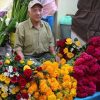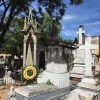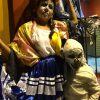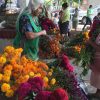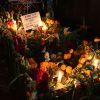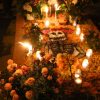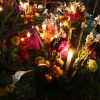
At the Santa Cruz Xoxocotlan Cemetery in Oaxaca, family, friends and musicians gather to remember a loved one and to celebrate life.
One thing that makes Mexico unique among nations of the world is how the people there deal with the subject of death. Like all cultures, Mexicans mourn the passing of a family member or loved one, but in Mexico they do not fear death, they laugh at it.

Out for an afternoon stroll these Dia de los Muertos celebrants in Oaxaca city don’t seem put off by death.
Death is such a part of life that Mexicans give their children skeleton toys and little coffins to play with. And every year from October 31st to November 2nd they celebrate death as part of the great cycle that brings those they love into the world and ultimately takes them away.

It’s normal to grieve the passing of a loved one, but in Mexico it’s normal for young and old to celebrate their life.
As far back as 3,000 years in what is now Mexico, Olmecs, then later Aztecs, spent a month in late summer commemorating the deaths of those they cherished. When Spanish conquerors came along in the 16th Century and pressed Catholicism onto the indigenous cultures, they tried to quash the celebration. But instead the festival Dia de los Muertos (Day of the Dead) became part of Mexican culture. It first took hold in southern Mexico and as its popularity spread throughout the country it became a national holiday. And it is becoming increasingly popular in other countries around the world.

Indigenous celebration of death goes back a long way and a clue can be found at the skull in the cross near the man’s right hand.
The state of Oaxaca, and the city of Oaxaca are where you will find some of Mexico’s most enthusiastic celebrations. And no matter where it is celebrated, Dia de los Muertos is festive and elaborate. Panteon General Cemetery in Oaxaca city and the cemetery in Santa Cruz Xoxocotlán (ho-ho-coat-lahn, or simply ho-ho), are two of the best places to observe celebrations firsthand. Xoxo’s cemetery has been rated by National Geographic Traveler as one of the top 10 cemeteries in the world.

Xoxo, just outside of Oaxaca offers a more tranquil viewing of Mexico’s Dia de los Muertos observance.
Preparations for Dia de los Muertos begin weeks, even months in advance. In the week or so before Dia de los Muertos, altars appear in shops, schools, restaurants, public spaces and homes. The altars are lavished with “papel picado” (tissue paper cutouts of skeletons and other characters), a bounty of food and drinks to satisfy the hunger and thirst of the dead, who are believed to come back to life during the festivities. Skulls of all sizes and often made out of sugar are common. And a picture of the deceased is prominently displayed on the altar.

Altars reflect the region of Mexico and the life of the person honored, and most include a portrait of the deceased.

Every altar has its own personality and they can be found almost anywhere one looks when in Oaxaca during Dia de los Muertos.
A cemetery gravesite is a permanent altar of remembrance, and during the celebrations they are festooned with decorations becoming a gathering spot to recall and celebrate the life of one who is still loved. Gravestones are scrubbed and cleaned, and if needed, fresh coats of paint applied.

This modest grave in Oaxaca city’s Panteon General Cemetery has recently been cleaned up and fresh paint adds color.

Love counts, not wealth. This woman of modest means makes sure her loved one has a candle to provide them light during Dia de los Muertos.
Flower vendors do a brisk business selling marigolds in vivid yellow and bright orange, along with purple cockscomb, and white calla lilies, which are often used at the gravesites of children. Countless candles of all sizes are purchased and burned during the course of the celebration to keep the cemeteries aglow.

In the stillness of the evening with just candles for light, even the simplest things take on special meaning.

The celebration is for those who have gone before, enjoyed by those who are still with us.

The cemetery in Xoxo is a soft undulation of lights as candles burn throughout the night.
Makeup is sold everywhere and people of all ages are transformed into ghouls, skeleton faces and exotic images of the occult.

The notion of dress up takes on new meaning during Dia de los Muertos.

Part of the fun during Dia de los Muertos is to get your face painted.
As night falls, cemeteries are filled with the living, many of who are there to remember family and loved ones. It is common for large groups to gather at a gravesite and stay during the two-day festival. Mariachi bands, many also wearing face paint, stroll the cemeteries, looking for customers who want some music to accompany their memories.

Dia de los Muertos is certainly a celebration and at times the noise surely wakes the dead.
The cemetery at Oaxaca city has become something of a draw for the curious and party people, lending an air of festivity to the two-evening event. Even tourists don face paint and get into the spirit of Dis de los Muertos. Just outside the cemetery is a carnival of food and drink vendors, rides and activities.

A snack vendor checks his inventory while he works the crowd at Xoxo during Dia de los Muertos.
Xoxo, approximately three miles from Oaxaca city, is a small town of about 60,000, compared to Oaxaca city’s 300,000-plus people. And while the cemetery in Xoxo is smaller than Oaxaca’s Panteon General, it is more crowded and the celebrants are more subdued than the party atmosphere at Panteon General.

A group of face-painted tourists vamp at Oaxaca city’s Panteon General cemetery during Dis de los Muertos.
But at either cemetery, if one approaches with respect and offers some kind words for the departed, you might be offered a nice sip of mezcal in appreciation. Bring your own bottle of spirits to leave at the altar and you’re sure to be offered more than a sip.

During the day, before Dia de los Muertos get underway, families tend to the final resting place of their loved ones.

Family pride and success are evident at this memorial in Oaxaca city. The patriarch was both successful and loved his wife and children.

The six children are all successful and still revere their parents and lovingly tend the memorial of their parents.
Dia de los Muertos is more than just cemeteries, elaborate face paint, pretty flowers, shots of mezcal or candles burning by a gravestone at night. It is very much about the concatenation of life and death, the celebration of families and memories.

Skeletons are a major visual element in many of the altars and grave sites during Dia de los Muertos.

Work for Dia de los Muertos starts well before the candles are lighted. Gravesites need to be cleaned, flowers arranged and preparations completed like at Oaxaca’s main cemetery.
And Dis de los Muertos is a chance to laugh at the face of death.
For more information about Dia de los Muertos, visit these website:
nationalgeographic.org/dia-de-los-muertos
nationalgeographic.com/travel/top-10/cemeteries
